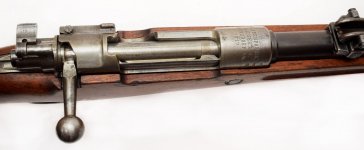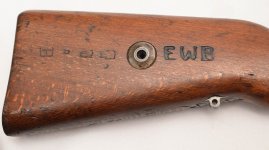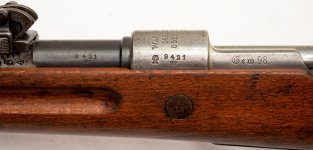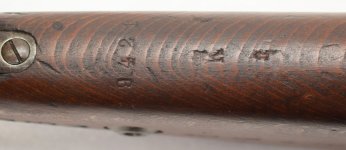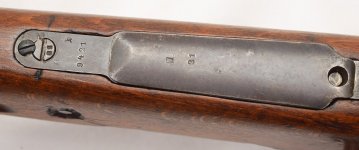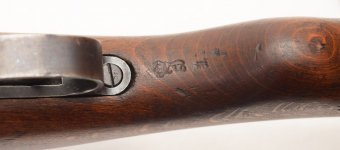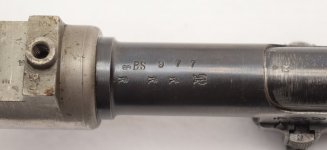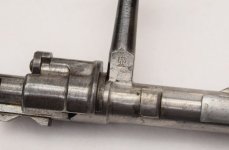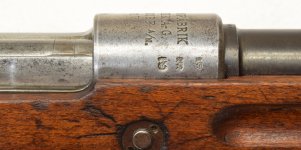Finally have a MWO Gew98 that I can keep. Getting one in the condition I like has been a very tough nut to crack.
And to me, the EWB connection is a bonus. The rifle remains in its original Imperial configuration save for a replaced
handguard. I will endeavor to post additional images as Paul may need additional data.
Even though this is EWB property marked, since its an original configuration Gew98 I put it in this section.
And to me, the EWB connection is a bonus. The rifle remains in its original Imperial configuration save for a replaced
handguard. I will endeavor to post additional images as Paul may need additional data.
Even though this is EWB property marked, since its an original configuration Gew98 I put it in this section.

